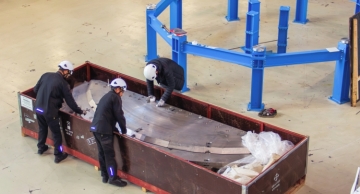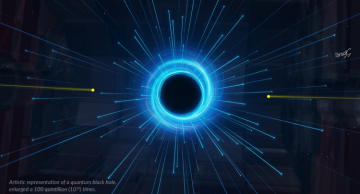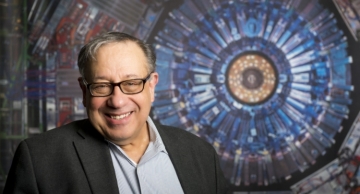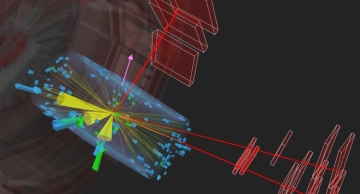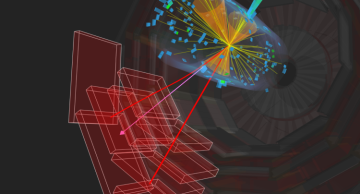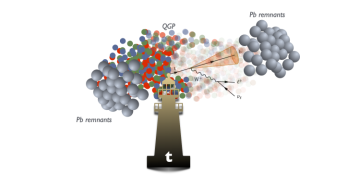After an eight-week journey, the first HGCAL absorber structure (CE-H1) was delivered to CERN and is ready to be assembled, just 100 metres above where the detector will eventually be located.
Seventeen enormous boxes were delivered at the CMS…
News
|
nstathak |
Detector
|
maiqbal |
Physics
The CMS experiment utilises cutting-edge machine learning techniques to search for microscopic, quantum black holes and other exotic objects that evaporate in an instant.
Black holes are amongst the most fascinating objects in the universe.…
|
adelanno |
Physics
Upon close inspection, the tetraquark family members are consistent with tightly bound diquark pairs
The CMS Collaboration has identified three extremely rare same-flavor teraquark states and determined, based on their spin-parity configuration,…
|
sohurst |
Engage with CMS
Luigi Marchese wins the prestigious SIF 2025 award for Science Communication, recognising his work on disseminating physics through comic books from the Societa’ Italiana di Fisica “Italian Physics Society”, or SIF.
LUIGI MARCHESE, ETH Zürich e…
|
nstathak |
Engage with CMS
“I can’t believe such an amazing experiment is right on our doorstep!”
“Wow!”
“Thanks so much for sharing this with us!”
These are some of the quotes from around 50 residents of the Pays de Gex, mostly from Cessy, who came to a special evening visit…
|
nstathak |
Collaboration
Joel Butler, former CMS Spokesperson (2016-18), has been awarded with the APS 2026 Panofsky Prize in Experimental Particle Physics.
The prestigious prize was announced this morning by the American Physical Society (APS).
For wide-ranging scientific…
|
maiqbal |
Physics
The CMS experiment announces new results for the Higgs 2025 conference.
For the Higgs 2025 conference, CMS publishes a number of new results.
The LHC Run 2 Legacy on Higgs boson pair production is obtained in an ATLAS+CMS combination (HIG-25-…
|
nstathak |
Collaboration
The CMS Collaboration announced the 2025 Young Researcher Prize winners during the September 2025 CMS Week. The winners are: Cécile Caillol, Elisabetta Manca, Mario Masciovecchio, Jennifer Ngadiuba!
This award recognises the contributions of truly…
|
maiqbal |
Physics
Using data collected from 2016 to 2023 and cutting-edge machine learning, CMS observes for the first time the creation of a top quark together with a W and a Z boson – a process so rare it occurs only once in a trillion proton-proton…
|
maiqbal |
Physics
In the first search of its kind at a particle collider, the CMS experiment looks for partially visible sprays of particles (jets), containing leptons and dark matter using physics-informed machine learning.
Can we shed light on dark matter?…
|
adelanno |
Physics
Five years after the first evidence that heavy metal hits the top quark, CMS now observes the clash of two titans with higher precision at unprecedented energy.
Using lead-lead collision data acquired in 2023 at the highest energy ever achieved by…
|
nstathak |
Collaboration
The CMS Collaboration is proud to announce the recipients of the 2024 Industry and Partner Awards, which recognise the vital contributions of our partners in advancing the experiment's capabilities. This year, we honour two collaborators for their…

